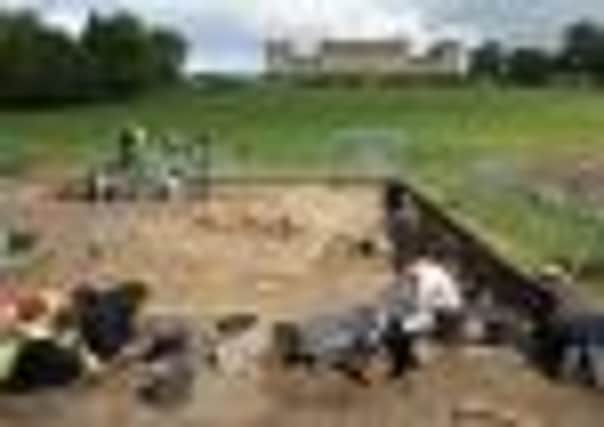Harewood excavation reveals links with Caribbean


But a team of archaeologists from York University is looking back at the history of Harewood’s original manor house, built long before the current home was created, and they have made some intriguing discoveries.
In the shadow of Harewood House, near Leeds, undergraduate students from the university are carrying out the painstaking task of unearthing the remnants of Harewood’s predecessor, Gawthorpe Hall, a medieval manor house that was demolished in 1773.
Advertisement
Hide AdAdvertisement
Hide AdThe excavation is providing important new insights into the rise of the Lascelles family which still live at Harewood to this day.


They have already discovered artefacts including a coin dating from the early 15th century, an 18th century chamber pot, decorative glassware and wine bottle fragments, decorative pins and a thimble as well as ceramics from the medieval period up to the 18th century, helping to tell the story of how the family lived, how the hall was decorated and more besides.
The students have also unearthed a flint arrowhead dating back to pre-history.
David Lascelles, whose family commissioned the building of Harewood House in the 18th century, said: “So much of what we know of Harewood’s history focuses on Harewood House and who has lived there. The excavation being done by the university students is helping to fill some of the gaps of that earlier history and – we all hope – answer some of the questions about Gawthorpe.”
Advertisement
Hide AdAdvertisement
Hide AdThe excavation, is being led by Dr Jonathan Finch, of the university’s department of archaeology in partnership with York Archaeological Trust.
Dr Finch said: “As well as providing a much longer history of Harewood that stretches thousands of years back into prehistory, the archaeology will give us a unique insight into the impact the Caribbean sugar industry and slavery had, not just on the fortunes of the Lascelles family, but on English landscape and society as a whole over 200 years ago.”
Dr Finch also headed a team from York University which travelled to Barbados last month to investigate the old Lascelles estates, some of which continue to operate as sugar plantations with historic houses and factory buildings still surviving.
Artefacts discovered there will be added to those found at Gawthorpe to create a new teaching resource based in both Barbados and Yorkshire.
Advertisement
Hide AdAdvertisement
Hide AdAfter carrying out exploratory digs and geophysical surveys over the last two years, the student archaeologists are spending three weeks uncovering the layout of the hall, of which only two contemporary illustrations survive.
Gawthorpe Hall was built by the Gascoigne family in the 13th century. It was acquired by the 1st Earl of Strafford, Thomas Wentworth, in 1614, and several modifications and additions were made before its sale to Sir John Cutler in 1656.
The medieval manor house again changed hands in 1738 to Henry Lascelles, a wealthy trader with business interests in the West Indies, and was inherited in 1753 by its final owner, Edwin Lascelles.
Edwin commissioned architect John Carr and work on Harewood House began in 1759. For 12 years, the Lascelles family continued to live in Gawthorpe Hall while their new home took shape on the rising ground above them. In 1771, they left the hall to move to Harewood House with its brand new Robert Adam interiors and Thomas Chippendale furniture.
Advertisement
Hide AdAdvertisement
Hide AdGawthorpe Hall was demolished by 1773, its remaining traces in-filled with rubble and covered with turf to become part of Harewood’s dramatic Capability Brown designed landscape park. It is a mystery to this day what happened to most of the contents of this now lost medieval manor house.
Schoolchildren and the public can find out more during education sessions that will allow school groups to explore the excavation, and talk to the archaeologists. Workshops, lectures and public tours of the dig as well as exhibits of finds will be a feature of Harewood’s Medieval Festival on July 16 and 17.
Visitors to the festival will also be able to find out more about Harewood All Saints’ Church, founded in 1116, the 12th century castle and medieval village of “Harwood”, which was then spelt without an “e”.
More details of the festival have already been posted online at www.harewood.org/medievalfestival.